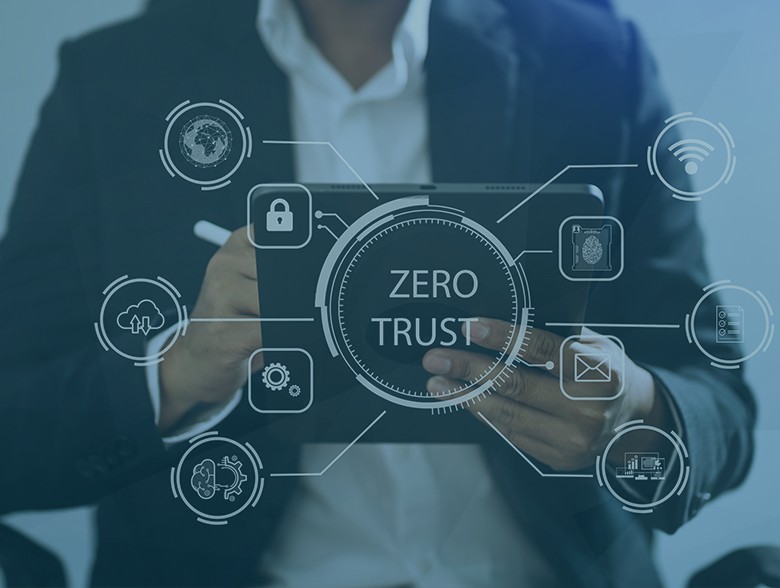By Jaye Tillson, Director of Strategy, Axis Security
A question I get asked frequently is, “Will zero trust replace SD-WAN?”. Let’s take a deeper look at both and assess their compatibility and potential to coexist or replace each other.
In today’s digital landscape of the hybrid worker, organizations are constantly seeking robust and secure network solutions to meet their ever-evolving requirements. Data, services, systems, users, and their devices are now everywhere and two prominent approaches to assist with this world of access complexity have gained traction. They are Zero Trust and Software-Defined Wide Area Networking (SD-WAN).
Over the years SD-WAN has proven its value in optimizing network performance, there is a growing discussion in our industry about whether Zero Trust will eventually replace SD-WAN as the preferred network architecture of choice.
Understanding SD-WAN:
SD-WAN is a technology that allows organizations to connect and manage various types of networks, including MPLS, broadband, and cellular, through software-defined control and centralized management. It enables organizations to improve network performance, enhance security, and reduce costs by intelligently routing traffic based on application, bandwidth requirements, and network conditions. SD-WAN provides a flexible and scalable solution for organizations with geographically distributed branches, enabling them to leverage multiple network links efficiently.
Exploring Zero Trust:
Zero Trust is a security concept that challenges the traditional perimeter-based security model that we are all familiar with. Instead of assuming trust within our network, Zero Trust assumes zero trust, and every user, device, and network element must be authenticated and authorized before gaining access to resources. It employs granular access controls, continuous monitoring, and adaptive authentication to ensure that only authenticated and authorized users can access specific resources. Zero Trust minimizes the risk of lateral movement within the network, mitigating the potential impact of breaches and insider threats.
The Relationship Between Zero Trust and SD-WAN:
Zero Trust and SD-WAN have different primary objectives. SD-WAN focuses on optimizing network performance, while Zero Trust emphasizes security. However, I believe they can complement each other to create a more robust and secure network infrastructure.
Zero Trust can enhance SD-WAN’s security capabilities by adding an additional layer of authentication and access control. By implementing Zero Trust principles, organizations can ensure that only authorized users and devices can access the SD-WAN network and its associated resources. This prevents unauthorized access and strengthens the overall security posture.
On the other hand, SD-WAN can improve the performance and efficiency of Zero Trust implementations. SD-WAN’s ability to dynamically route traffic based on network conditions and application requirements can be used to enhance the user experience and minimize latency associated with Zero Trust security measures.
Will Zero Trust Replace SD-WAN?
While Zero Trust and SD-WAN can work together to provide a comprehensive network solution, I believe that it is unlikely that Zero Trust will completely replace SD-WAN. Both approaches serve different purposes and address distinct aspects of networking and security.
SD-WAN offers significant benefits in terms of network performance optimization, cost reduction, and efficient resource utilization. It is particularly useful for organizations with distributed branches that require reliable connectivity and application performance across diverse network links.
On the other hand, Zero Trust is primarily concerned with security and ensuring that only authorized entities can access resources. It addresses the evolving threat landscape and provides a more proactive approach to securing networks and protecting sensitive data.
To conclude, in the ever-evolving landscape of network architecture and security, both Zero Trust and SD-WAN have emerged as practical approaches. While SD-WAN excels in optimizing network performance and reducing costs, Zero Trust focuses on securing access to resources. I believe that these two concepts are not mutually exclusive; instead, they can complement each other to create a more robust and secure network infrastructure.
The collaboration between Zero Trust and SD-WAN allows organizations to achieve enhanced network performance and security. It is crucial for organizations to understand their specific requirements and align their network strategy accordingly, leveraging both Zero Trust and SD-WAN to create a comprehensive and future-proof networking solution.
About the Author
 Jaye Tillson, Director of Strategy, Axis Security. Jaye is a technology leader with a proven track record in delivering global strategic and enterprise wide programmes totalling over $1billion. He provides technical advisory to global mergers and acquisitions across multiple countries and cultures, large scale global transformation programs, enterprise-wide cyber security governance, digital strategic planning, and the creation of operational efficiencies.
Jaye Tillson, Director of Strategy, Axis Security. Jaye is a technology leader with a proven track record in delivering global strategic and enterprise wide programmes totalling over $1billion. He provides technical advisory to global mergers and acquisitions across multiple countries and cultures, large scale global transformation programs, enterprise-wide cyber security governance, digital strategic planning, and the creation of operational efficiencies.
He has spent over 20+ years understanding the challenges of defining and implementing enterprise strategies and translating these into the design and deployment of enterprise-wide platforms and infrastructures. His expertise includes the globalisation of IT platforms to create cost and resource efficiencies, resilience, and improved information flow to support executive decision making.
Jaye has led multiple large strategic technology programmes and is a critical asset for the success of organisations undergoing global transformation. He has built and trained several globally reaching teams, capable of successful execution of strategic plans. He is currently responsible for the budget, costing, fiscal planning, cost reduction and global people management at a large technology manufacturing organisation.
He is recognised as a mentor and coach in his area of expertise and observes industry and market trends to ensure his technology recommendations fit the business strategy. He is a senior technical lead, is seen as the go-to person within the business for all technical questions and is seen as a role model in the organisation.


